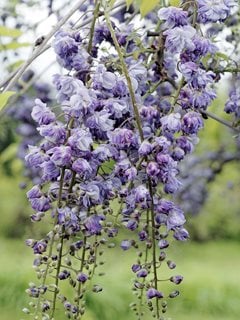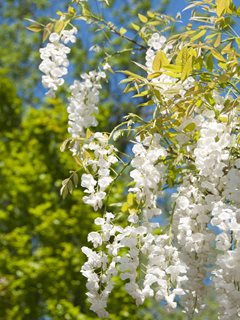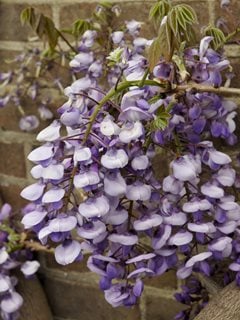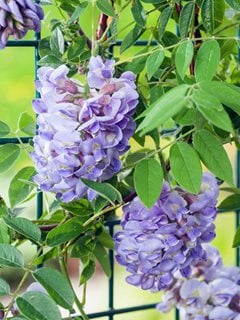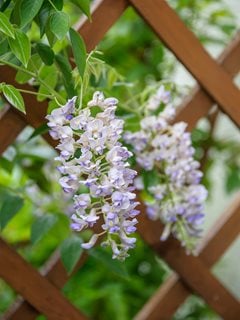Wisteria Types
Compare the different types of wisteria vines commonly grown in home gardensWhen selecting which wisteria type to grow in your garden you’ll have a choice between Asian wisterias and American wisterias. Compare the five most common species below.
Botanical name:
Wisteria floribundaZones:
4-9Height:
10 to 30 feet or higherFlowering period:
Mid-spring to early summerFast facts:
- 1- to 3-foot-long chain-like clusters of flowers, called racemes.
- The flowers of most varieties are heavily scented.
- A reliable choice for gardeners in northern climates.
- Offers the greatest color variety.
- May be trained horizontally, up to 30 feet or further.
Botanical name:
Wisteria sinensisZones:
5-8Height:
10 to 25 feet or higherFlowering period:
Early spring to early summerFast facts:
- Has shorter flower clusters and is not as cold hardy as its Japanese cousin.
- All the flowers in a cluster open at once, well before the foliage appears.
- The flowers bloom gradually over a period of weeks.
- Flowers often last longer than other wisterias.
- May be trained horizontally, up to 25 feet or further.
Botanical name:
Wisteria brachybotrys (syn. Wisteria venusta)Zones:
5-8Height:
10 to 25 feet or higherFlowering period:
Late spring through early summerFast facts:
- A Chinese wisteria.
- Has 6-inch long flower clusters.
- Blooming improves with age and regular pruning.
- Has silky hairs on foliage.
- White and purple cultivars available.
Botanical name:
Wisteria frutescensZones:
5-9Height:
10 to 30 feetFlowering period:
Heaviest in late spring, repeating sporadically in summer.Fast facts:
- Native to the eastern U.S.
- Mainly grown in the Carolinas and along the East Coast.
- It has the shortest racemes of the wisteria family.
- Flowers are lilac-blue and bunched in 4- to 6-inch-wide clusters.
- Generally not as heavily scented.
Botanical name:
Wisteria macrostachyaZones:
3-9Height:
15 to 25 feetFlowering period:
Late spring through early summerFast facts:
- A native found in the Midwest as well as Louisiana and Texas.
- Has 6- to 12-inch flower clusters.
- Is the most cold-hardy species.
- Has the latest bloom time, with flowers emerging in June.
- Often reblooms throughout the growing season.
When comparing the different types of wisteria, the choice often boils down to aesthetics and availability. The two species of wisteria most commonly grown in the United States are Japanese wisteria and Chinese wisteria. These Asian imports have become the favorites of gardeners because of their showy flower clusters, intense fragrance, and the wide array of color options and cultivars available. However, they also are the most aggressive growers and are even considered invasive in some areas of the country.
If you are looking for a tamer form of wisteria, our native species (American wisteria and Kentucky wisteria) are great alternatives that offer the same lush beauty but are slower growing and less likely to overrun your garden. Unfortunately, these varieties can be difficult to find at local nurseries, but you can often purchase them from mail-order suppliers.
How do I tell the different species of wisteria apart?
Look at the direction the vines twist around their support structure. If they turn counterclockwise, you are growing Chinese wisteria or one of the American varieties. Japanese wisteria always grows clockwise. Also look at the seedpods. The pods of the Asian wisterias have velvety surfaces covered with a downy fuzz while the pods of native wisteria are smooth.
